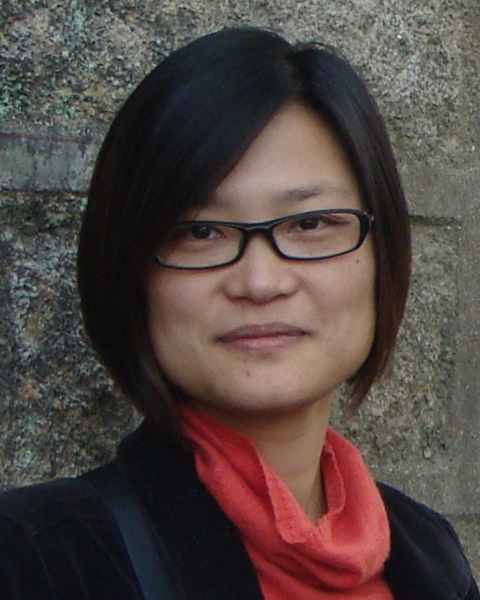PQA 06 - PQA 06 Biology and Patient Reported Outcomes/QoL/Survivorship Poster Q&A
2818 - Effects and Mechanisms of Fractionated Radiotherapy Combined with CD47/PD-L1 Inhibitors in the Treatment of Esophageal Cancer
Monday, September 30, 2024
5:00 PM - 6:00 PM ET
Location: Hall C
Screen: 19

Yang Jiao, MD, PhD
Medical College of Soochow University
Suzhou, Jiangsu
Presenter(s)
X. Lv1,2, L. Wang2, S. Qin2, and Y. Jiao1; 1Medical College of Soochow University, Suzhou, Jiangsu, China, 2Department of Radiation Oncology, The First Affiliated Hospital of Soochow University, Suzhou, Jiangsu, China
Purpose/Objective(s): This investigation aimed to evaluate the therapeutic efficacy and immunological outcomes of diverse fractionated radiotherapy protocols in esophageal carcinoma, as well as to elucidate the synergistic mechanisms and benefits of integrating radiotherapy with CD47/PD-L1 inhibitors. Materials/
Methods: Employing an esophageal cancer model derived from the AKR cell line in mice, we examined the effects of single-dose 10 Gy, two doses of 6.18 Gy, and five doses of 3.1 Gy radiotherapy on tumor reduction, monitoring post-treatment alterations in body mass, tumor dimensions, and hematological profiles. Serum levels of IFN-? were quantified via ELISA, while flow cytometric analysis provided insights into tumor immunological infiltrates. Co-cultures of esophageal cancer cells with Peripheral Blood Mononuclear Cells (PBMCs) facilitated the investigation of immune response mechanisms in vitro. Advanced mechanistic studies involved 10x genomics single-cell sequencing and Western blot analyses to probe the cGAS-STING signaling cascade and ISG15 expression, complemented by co-immunoprecipitation assays to explore the interaction between ISG15 and IRF-3.
Results: Fractionation at 2×6.18 Gy emerged as the most efficacious in diminishing tumor volume, contrasting with the 5×3.1 Gy regimen, which induced significant weight loss, indicating elevated toxicity. Notably, all radiotherapeutic approaches activated immune responses, as evidenced by increased serum IFN-? levels and augmented tumor immune cell infiltration, with the 2×6.18 Gy protocol demonstrating superior immune engagement. The concurrent application of radiotherapy with CD47/PD-L1 inhibitors substantially enhanced both therapeutic and immune responses, surpassing the outcomes of monotherapies and indicating a potential synergistic interaction. This combination strategy counteracted the upregulation of CD47 and PD-L1 induced by irradiation, thus overcoming immune evasion. Furthermore, the activation of the cGAS-STING pathway was significantly pronounced in the combined treatment group, both in tumor cells and PBMCs. A notable reduction in ISG15 expression within T cells post-treatment hinted at a modulation of the cGAS-STING pathway, potentially mediated by the prevention of IRF-3 phosphorylation through ISG15 binding.
Conclusion: Combining radiotherapy with CD47/PD-L1 inhibitors enhances immune responses to esophageal carcinoma, emphasizing the importance of precise fractionation and timing. This study underscores the cGAS-STING pathway and immune checkpoint modulation as key post-radiotherapy, with ISG15 as a crucial regulator. These findings offer a foundation for improving esophageal cancer treatments by integrating immunotherapeutic targets, paving the way for further research to optimize combination therapies for better patient outcomes.
Purpose/Objective(s): This investigation aimed to evaluate the therapeutic efficacy and immunological outcomes of diverse fractionated radiotherapy protocols in esophageal carcinoma, as well as to elucidate the synergistic mechanisms and benefits of integrating radiotherapy with CD47/PD-L1 inhibitors. Materials/
Methods: Employing an esophageal cancer model derived from the AKR cell line in mice, we examined the effects of single-dose 10 Gy, two doses of 6.18 Gy, and five doses of 3.1 Gy radiotherapy on tumor reduction, monitoring post-treatment alterations in body mass, tumor dimensions, and hematological profiles. Serum levels of IFN-? were quantified via ELISA, while flow cytometric analysis provided insights into tumor immunological infiltrates. Co-cultures of esophageal cancer cells with Peripheral Blood Mononuclear Cells (PBMCs) facilitated the investigation of immune response mechanisms in vitro. Advanced mechanistic studies involved 10x genomics single-cell sequencing and Western blot analyses to probe the cGAS-STING signaling cascade and ISG15 expression, complemented by co-immunoprecipitation assays to explore the interaction between ISG15 and IRF-3.
Results: Fractionation at 2×6.18 Gy emerged as the most efficacious in diminishing tumor volume, contrasting with the 5×3.1 Gy regimen, which induced significant weight loss, indicating elevated toxicity. Notably, all radiotherapeutic approaches activated immune responses, as evidenced by increased serum IFN-? levels and augmented tumor immune cell infiltration, with the 2×6.18 Gy protocol demonstrating superior immune engagement. The concurrent application of radiotherapy with CD47/PD-L1 inhibitors substantially enhanced both therapeutic and immune responses, surpassing the outcomes of monotherapies and indicating a potential synergistic interaction. This combination strategy counteracted the upregulation of CD47 and PD-L1 induced by irradiation, thus overcoming immune evasion. Furthermore, the activation of the cGAS-STING pathway was significantly pronounced in the combined treatment group, both in tumor cells and PBMCs. A notable reduction in ISG15 expression within T cells post-treatment hinted at a modulation of the cGAS-STING pathway, potentially mediated by the prevention of IRF-3 phosphorylation through ISG15 binding.
Conclusion: Combining radiotherapy with CD47/PD-L1 inhibitors enhances immune responses to esophageal carcinoma, emphasizing the importance of precise fractionation and timing. This study underscores the cGAS-STING pathway and immune checkpoint modulation as key post-radiotherapy, with ISG15 as a crucial regulator. These findings offer a foundation for improving esophageal cancer treatments by integrating immunotherapeutic targets, paving the way for further research to optimize combination therapies for better patient outcomes.
